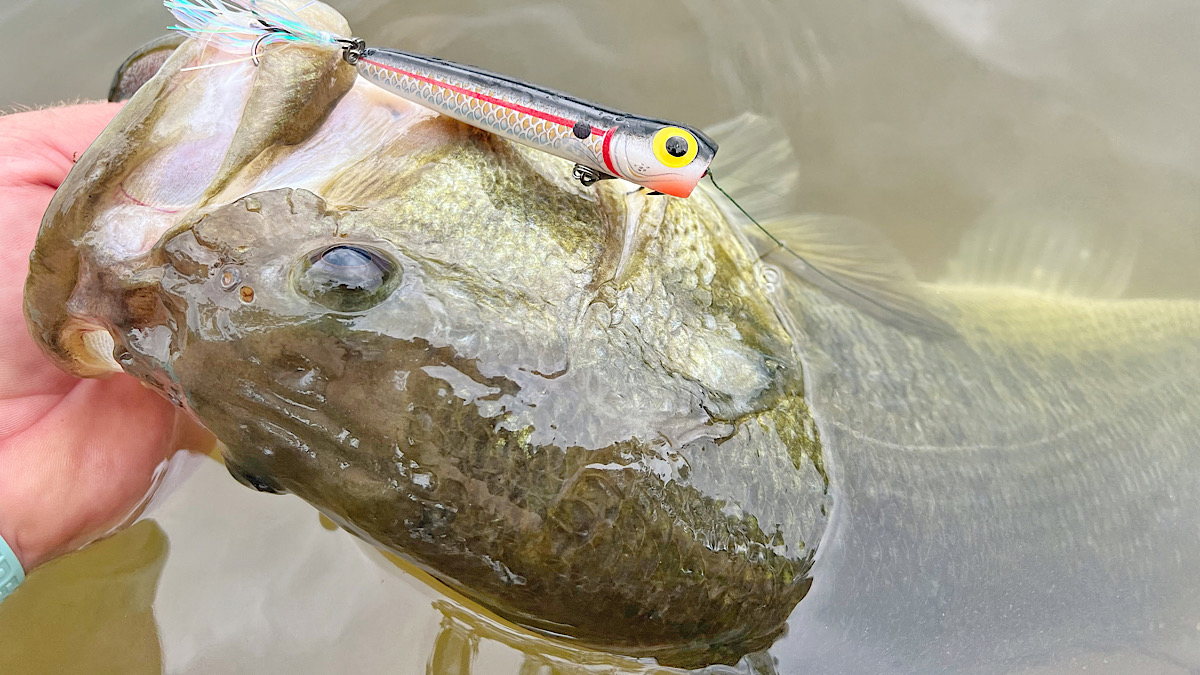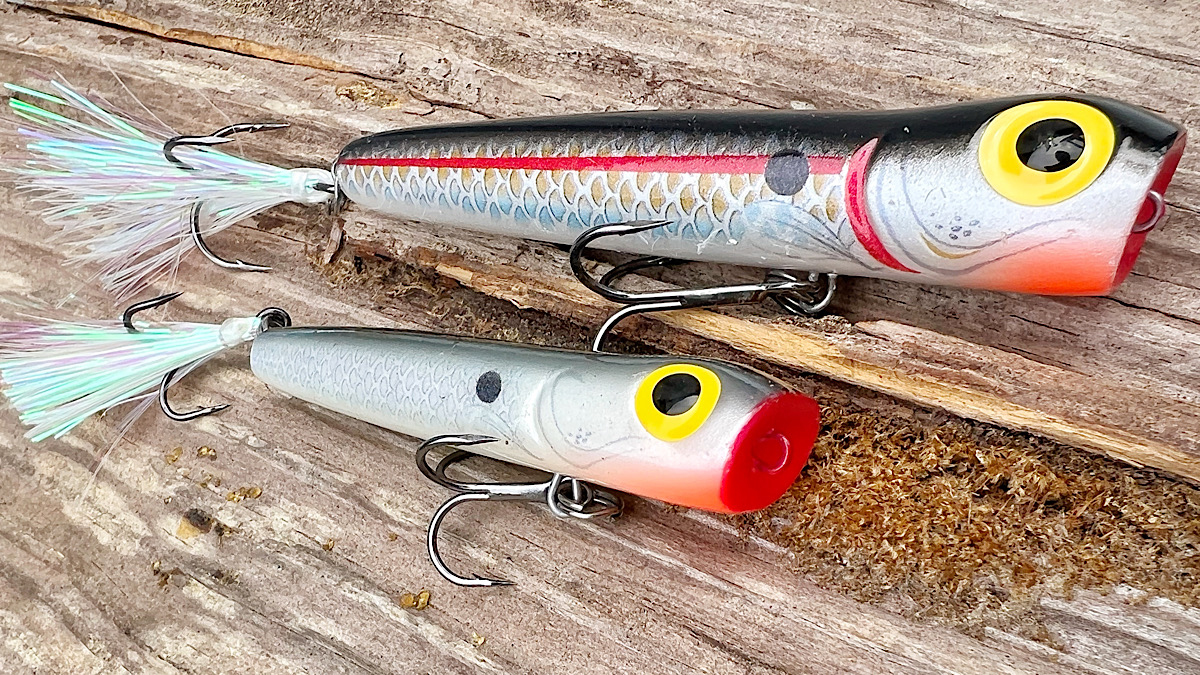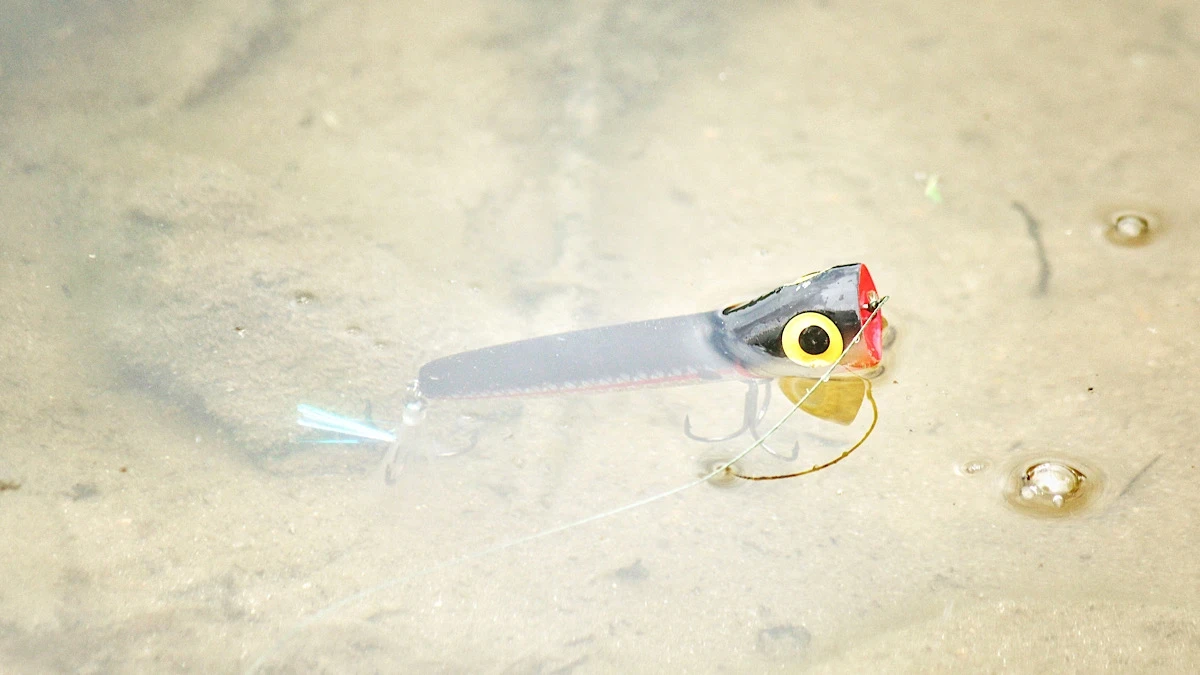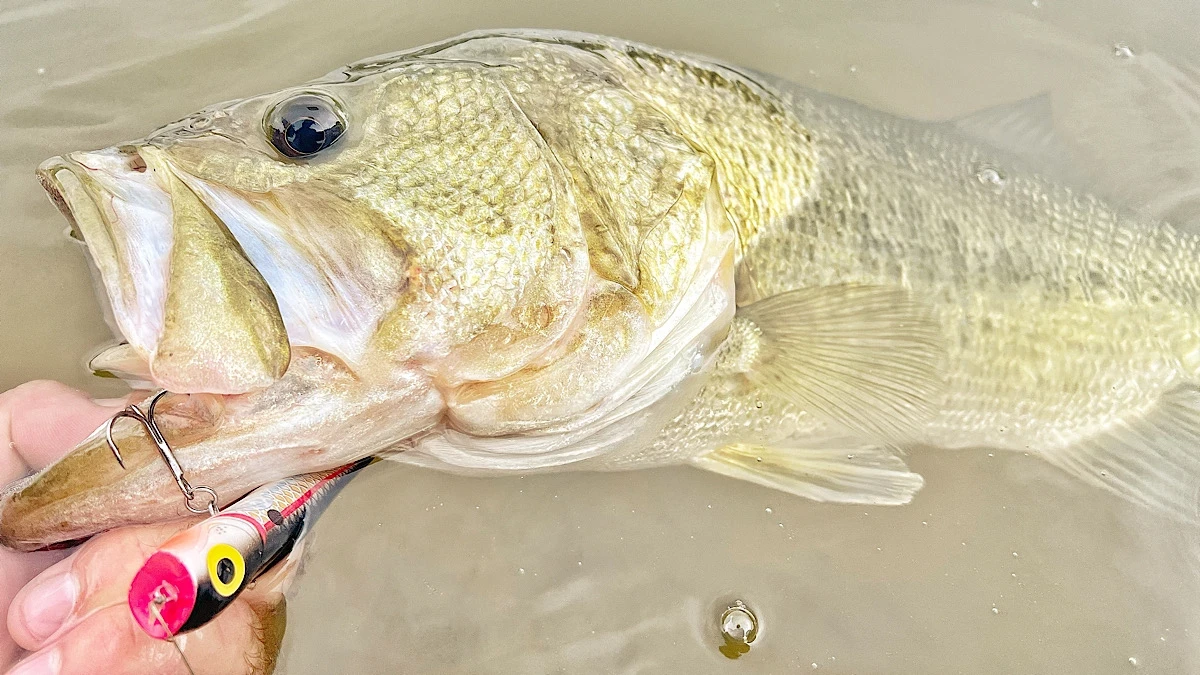The Storm Rattlin’ Chug Bug has been around for a long, long time. I remember fishing one of these with my dad when I was a kid some-30 years ago now. But this bait has stood the test of time, still producing big blowups day in and day out. So today, we’re going to take a look at a few of the features that have led to this bait being a mainstay bass fishing classic.
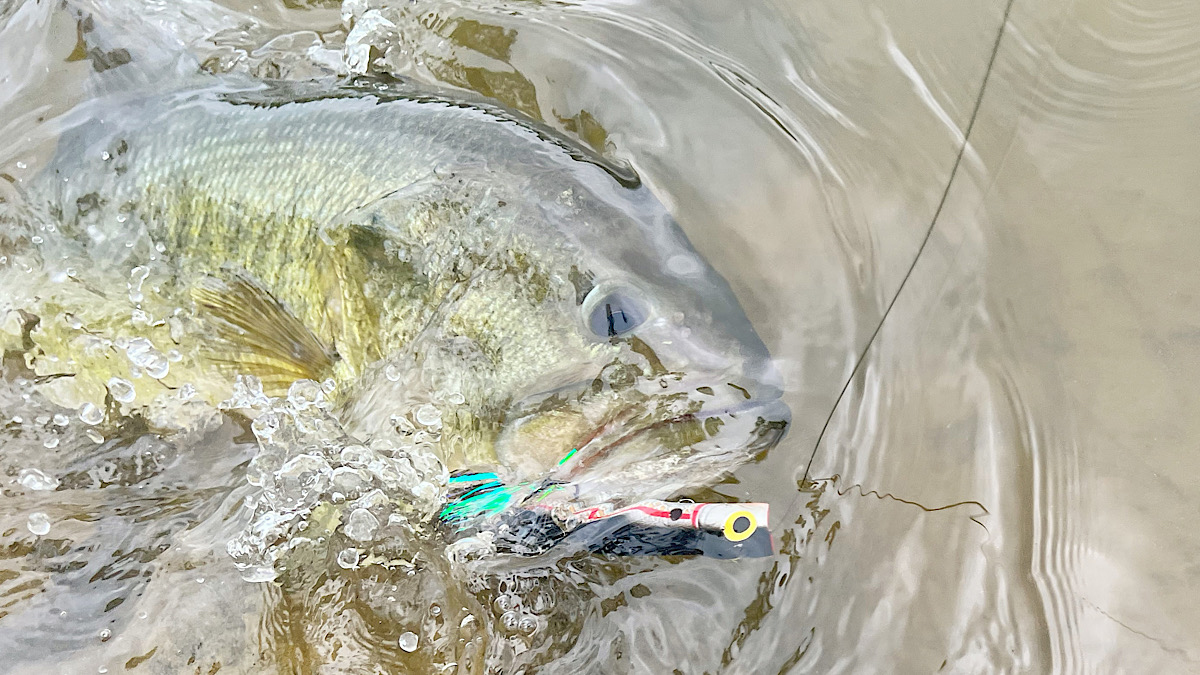
Action
The “chug” in the Rattlin’ Chug Bug’s name comes from the primary action that’s produced by this bait’s mouth. When the lure is twitched along the surface, the cupped mouth makes a chugging or gurgling sound as the bait pushes a small wave of water forward. The Rattlin’ Chug Bug was one of the earliest baits to produce this kind of action and therefore became one of the baits synonymous with this whole genre of lure.
You can walk a Rattlin’ Chug Bug as well, twitching it a little slower so the bait kicks to one side and then the other. When you fish it this way, the mouth doesn’t dig in as much but there’s still a noticeable chug at the front of the bait. It’s not as pronounced as when you’re simply chugging the bait along in a straight line, but the subtler gurgling action is still there and that sets this bait apart form other topwater lures you can walk like a Spook or a Sammy.
Rattles and sizes
The Rattlin’ Chug Bug has a serious rattle inside of it. Best I can tell it’s a multi-bead rattle system, but it’s hard to tell for sure since none of the colors are transparent. The sound is loud and sharp, on the opposite end of the spectrum from what you’d hear out of a one-knock style bait. And it takes very little movement for this bait to make noise. So even if you pause the Rattlin’ Chug Bug and there’s just a ripple on the water, the beads inside the lure will still roll around and create a little bit of noise.
This bait comes in two sizes, a 2 1/2-inch version and a 3 1/4-inch version. These baits are noticeably different in size and certainly plug into two completely different bites. For instance, if you’re looking for more of a finesse popper during a tough post-spawn bite, go with the smaller bait. If you’re fishing around a mayfly hatch where big bass are crushing bluegill, step it up to the bigger Rattlin’ Chug Bug.
Body shape and colors
The Rattlin’ Chug Bug is more elongated than most poppers, especially the larger model. And both of these baits have more of a squashed oval shape to their bodies if you look down them from nose to tail, compared to other popping style topwaters which are typically rounder when viewed from this angle. These two attributes give the Rattlin’ Chug Bug a different look and action in the water.
This bait also comes in a wide variety of color choices, 17 in all. This gives the angler an option from black to bone, shad to bluegill and everything in between. Many of the color schemes are super detailed, with tiny scale patterns incorporated into the paint jobs. And Storm also offers up several colors that have a chrome finish to them, which do a great job of mimicking the reflective scales of a shad.
The mouth
The Rattlin’ Chug Bug doesn’t have a super deep cup to the mouth. Storm opted not to add a split ring to the line tie eye, something you’ll see on some topwaters. Storm likely opted out on the split ring to keep the nose of the bait up. It doesn’t seem like a split ring would weigh all that much, but it can often be enough to throw the whole balance of a bait like this off and cause the mouth to dig into the water too much. You could try adding a split ring if you’d like, but it’s not really necessary. Simply tie this bait on as is and you’re good to go. If you’re wanting to walk the bait more though, it might be a good idea to tie it on using a loop knot. This will create a similar hinge to what you’d get out of a split ring, without adding any weight to the bait. But if you’re just wanting to pop the bait along, whatever you’re preferred knot is will do just fine.
Hooks
Storm went with a light-wire, round-bend treble hook for the Rattlin’ Chug Bug, which I really like. The round bend is a good selection for most topwaters since bass have a tendency to swipe at these baits and not eat the whole lure. Round-bend hooks give you a better chance of the fish hooking itself on the swipe compared to EWG trebles that have more of an inward curled bend to the hook points. The thin wire allows for these hooks to be super sharp and require minimal effort to hook the fish. But since these hooks are thin wire, you’ll want to be careful not to bend them on the hookset or the fight, especially if you’re fishing the bait on braided line. Just be sure to set your drag a little looser and you’ll be fine. The back hook on the Rattlin’ Chug Bug has a feathered look to it, though the material Storm went with sn’t actually a feather like you’ll see on the back end of some topwaters. This is more of course material, like nylon, which makes this teaser tail hook a lot more durable than a feather would be. A true feathered treble hook looks great, but a few good fish catches and a hard day of fishing can destroy a feathered tail. This one will last a lot longer.
Final thoughts
The Storm Rattlin’ Chug Bug has done what few early artificial lures have been able to do, it has stood the test of time. This means that even though it’s been around for a while, it’s not a bait you should sleep on. The Rattlin’ Chug Bug’s body style and durable teaser tail hook are a couple of the design features that set this lure apart. Then the two size options and vast color selection really round this lure off as a topwater to contend with. You can walk the Rattlin’ Chug Bug side-to-side, chug it along slowly, or scurry it back across the water’s surface like it’s fleeing. And the sharp, thin-wire, round-bend hooks are ready to latch onto whatever takes a swing at it. At $7.99, the Rattlin’ Chug Bug is a reasonably priced topwater that will catch fish and last a long time.
The Storm Rattlin’ Chug Bug is available at:


